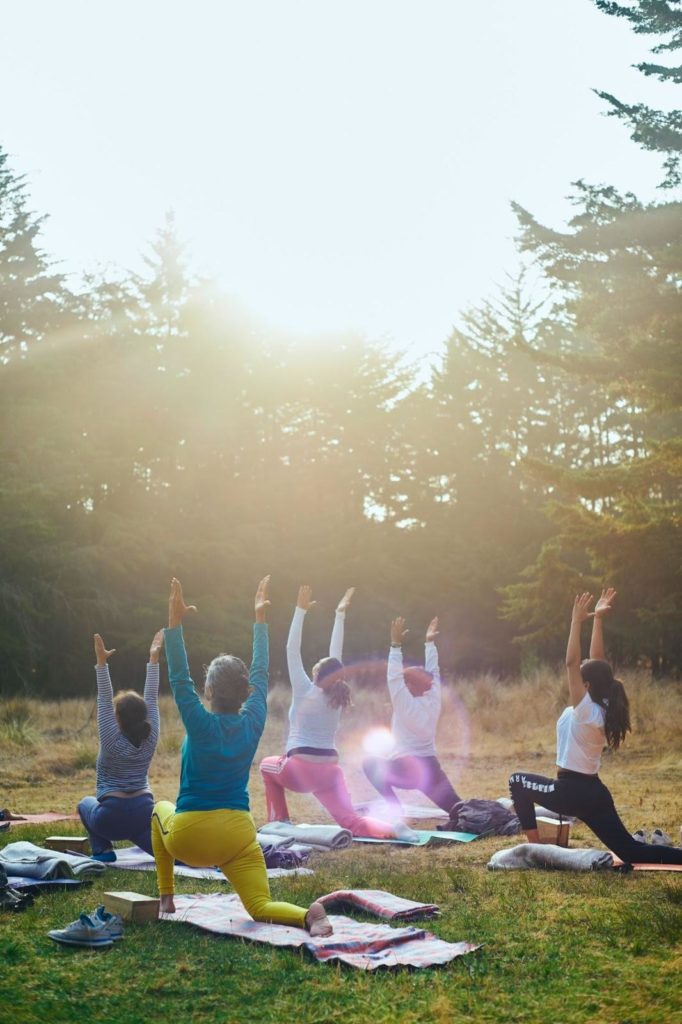What is Joyful Movement?
August 8, 2022

Assessing your Relationship with Movement
We have all heard that regular exercise is an important part of a healthy lifestyle. There’s no doubt that physical activity does the body good. For example, exercise can reduce risks of cancer, heart disease, and type II diabetes. It can also boost our mood, stress tolerance, and sleep quality.
Many of us can struggle to find the motivation to be more active. If you feel this way, it may be because you’ve internalized messaging about what exercise should be. Asking yourself the following questions may be helpful in beginning to unpack where your relationship with exercise currently stands:
-Do you use exercise to “undo” eating certain foods like sweets?
-Does movement feel like it only “counts” if you burn calories or sweat?
-Does exercise seem to be for the sole purpose of weight loss or weight maintenance?
-Do you feel guilty if you skip a workout?
-Do you go from long duration, high intensity exercise to not engaging in any movement at all?
Did you respond “yes“ to some of the above questions? If so, there’s a good chance diet culture has co-opted your sense of movement. As a result, movement may feel like a chore or punishment based on your food choices or body size. Think about it: if your motivation for activity is low, it’s probably because you don’t authentically enjoy doing it!
Is your goal is to move more or no longer dread the thought of working out? Joyful movement may be pivotal in your journey towards sustainable and enjoyable exercise.
What is Joyful Movement and Why is it Beneficial?
Joyful movement is exactly what it sounds like – engaging in movement that is centered around joy and pleasure. Let’s talk about why joyful movement might be helpful to increasing both your health and your quality of life.
As we noted above, regular movement is good for you! Joyful movement can aid in the consistency of physical activity. In fact, Recent research shows that enjoying the movement you do is a critical to whether or not you stick with it. Beyond that, joyful movement places emphasis on listening to your preferences and mind-body connection. As a result, this helps to develop a positive relationship with physical activity. With this, you may be more motivated, more consistent, and have less stress and guilt around movement.
Exploring Joyful Movement
If you are exploring joyful movement for the first time, the idea of enjoying exercise can feel totally novel and foreign. Below are a few ways to begin the process of rediscovering how to move your body in an authentically fun way.
Broaden your definition of movement
You DO NOT need to be drenched in sweat after a workout for it to “count”. All movement is movement! From dancing in the kitchen to walking the dog to running a marathon, all movement “counts”! In order to discover what physical activity you may enjoy, broaden your definition of movement.

Make a movement timeline of your life
Write down different forms of movement you engaged in throughout the years. What sticks out to you as enjoyable? Was it playing tag with friends on a warm summer evening when you were 9 years old? Was it hiking your favorite trail with your best friend during that incredible vacation? Take an inventory of the activities you loved that felt like you got to do them instead of having to do them. These are likely activities that bring you joy and might be worth returning to.
Try something new
One of the exciting parts of becoming a joyful mover can be exploring new forms of movement. Make a list of activities that you’ve never tried that might interest you. You may also be able to draw patterns around why they interest you. Are they all outdoors? Do they include an element of socialization or community? Do most of them include some form of competition? Recognizing those patterns could tune you into reasons for activity enjoyment.
Finding mindfulness in joyful movement
One of the keys to finding joy in movement is cultivating mindfulness around movement. Mindfulness is being fully present in the moment, aware of what’s around you and how you feel in your body. Start by pausing and gathering information about how you feel before, during, and after movement. It’s important to try to act as a passive observer of your sensations and thoughts when practicing mindfulness in movement. If you listen without judgment, you may sense if you and your body enjoy that particular type of movement. Mindful movement likely will rejuvenate you instead of depleting you. It will boost your mind-body connection instead of separating you from your body cues. It will also feel stress-relieving instead of stress-inducing.

Community matters
While using internal cues to guide movement is important in fostering joy, so is your external environment. Unfortunately, many health and fitness spaces hold biases making them feel unsafe for those with marginalized identities. While there is so much work to be done to progress the fitness industry, inclusive, affirming, and approachable spaces, platforms, and fitness professionals do exist. Search for a community that takes a non-diet, intersectional approach to movement and welcomes all bodies. Remember, your environment can make a big impact in your ability to move in an authentically pleasurable way.
Allow for Rest!
It may be counterintuitive to consider rest as a part of joyful movement. However, your ability to engage in movement and in rest is crucial in learning how to enjoy physical activity. Listen to both your body and mind when deciding whether movement makes sense. If you are sick, fatigued, sleep deprived, or mentally drained, you’d likely benefit from taking a day off and allowing yourself to recharge. Beyond that, movement doesn’t feel great when you’re exhausted!
If you find that you feel guilty for resting, feel anxious or irritable if you don’t exercise, are missing out on social activities to work out , or have strong fears of weight gain or being out of shape if you don’t engage in your normal movement routine, you may benefit from speaking with a dietitian, therapist, or physician who specializes in treating eating disorders.
Looking for support from a registered dietitian? Check out our services to connect with a non-diet dietitian today!
References:
Watch out diet culture. Inclusive fitness pros are coming for you.